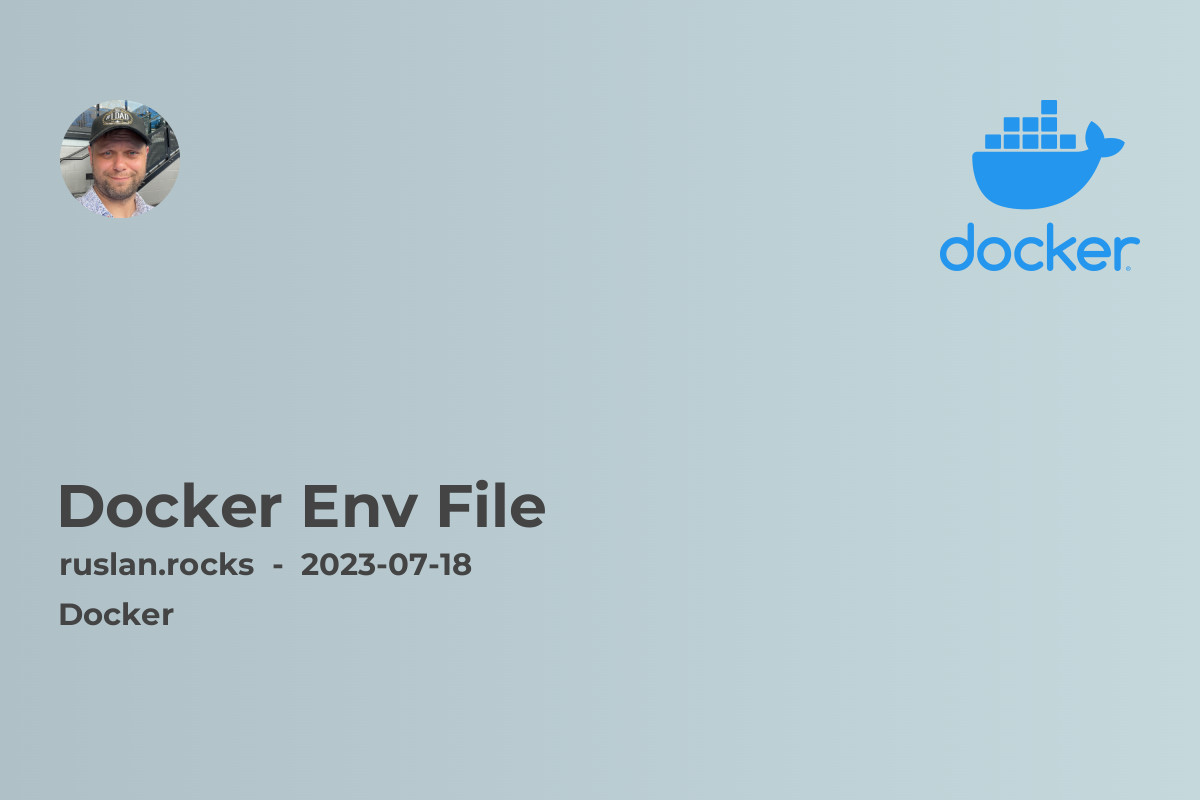- What is a Docker Env File?
- Managing Environment Variables with a Docker Env File
- Using the Docker Env File in Docker Compose
- Best Practices for Using a Docker Env File

Docker is a powerful tool that allows you to package and deploy applications in a containerized environment. One crucial aspect of using Docker is managing the configuration of your containers. In this article, we will explore the Docker env file and how it can simplify the process of configuring your containers.
What is a Docker Env File?
A Docker env file, also known as an environment file, is a plain text file that contains key-value pairs of environment variables. These environment variables are then passed to Docker containers at runtime. By managing the environment variables in a separate file, you can easily modify the configuration of your containers without changing the Dockerfile or command-line arguments.
Managing Environment Variables with a Docker Env File
Using a Docker env file, you can declare your environment variables in a structured manner. This makes it easier to manage and update the configuration of your containers. Instead of specifying the environment variables directly in your Dockerfile or command-line arguments, you can reference them from the env file.
For example, let's say you have a Node.js application that requires a database connection URL. Instead of hardcoding the URL in the Dockerfile or passing it as a command-line argument, you can define it in the env file as follows:
DB_URL=mongodb://localhost:27017/mydatabase
In your Dockerfile, you can then reference the environment variable like this:
ENV DB_URL=${DB_URL}
By separating the configuration into an env file, you can easily update the URL without modifying the Dockerfile or rebuilding the container. This flexibility is particularly useful when you have different configurations for different environments, such as development, staging, and production.
Using the Docker Env File in Docker Compose
Docker Compose is a tool that allows you to define and run multi-container applications. It uses a YAML file to configure the services, networks, and volumes required for your application. When using Docker Compose, you can also leverage the env file to manage the environment variables for your containers.
To use an env file in Docker Compose, you can specify it in your docker-compose.yml file using the env_file directive. For example:
version: '3.8'
services:
app:
build:
context: .
env_file:
- .env
In this example, the app service will use the environment variables specified in the .env file. This allows you to keep your Docker Compose file clean and concise while managing the environment variables separately.
Best Practices for Using a Docker Env File
When using a Docker env file, it's essential to follow some best practices to ensure the smooth operation of your containers:
-
Keep sensitive information secure: Avoid storing sensitive information, such as passwords or API keys, directly in the env file. Instead, use a secure secret management system like Docker Secrets or a configuration management tool.
-
Document your environment variables: Clearly document the purpose and usage of each environment variable in your env file. This will make it easier for other developers or operators to understand and modify the configuration.
-
Use symbolic links: If you have multiple env files for different environments, consider using symbolic links to point to the appropriate file. This can simplify the management of environment variables and ensure consistency across different environments.
-
Version control your env file: Include your env file in the version control system along with your Dockerfile and other configuration files. This ensures that the configuration is tracked and can be easily reverted if needed.
Now that we understand the benefits of using a Docker env file, let's explore some closely related topics that will further enhance your Docker knowledge:
- What Is Docker Compose: Learn how to define and manage multi-container applications using Docker Compose.
- Docker Container Logs: A Guide to Managing and Analyzing Your Application Logs: Discover different techniques for managing and analyzing container logs in Docker.
-
Docker Run Command: Deep dive into the various options and parameters of the
docker runcommand for launching Docker containers. - Docker Remove Container: Understand how to correctly remove Docker containers and clean up disk space.
- Docker Start Container: A Simple Guide: Learn how to start an existing Docker container that is stopped or paused.
In conclusion, the Docker env file provides a convenient and flexible way to manage the configuration of your containers. By separating the environment variables from your Dockerfile, you can easily modify the configuration without rebuilding the container. With the added benefits of Docker Compose and other related topics, you'll be well-equipped to streamline your container management workflow.
